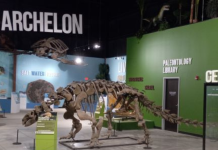
By Jim Brace-Thompson
Norwegian Prime Minister Erna Solberg has described it as the biggest landslide to hit her nation in over 125 years. “It hurts to see how the forces of nature have ravaged the area,” she tweeted.
Around 4:00 AM on December 30, 2020, the village of Ask about 15 miles northeast of Oslo was hit by a landslide 2,300 feet long and 1,000 feet wide. It took out a road and several buildings while shifting many others. 1,000 people were immediately evacuated due to fears of continuing slides. Nearly a dozen people were unaccounted for in the immediate aftermath.
The slide was caused by what is known as quick clay. When overstressed, this type of clay turns into a fluid state, bringing down all sediments atop it. The resulting collapse resulted in four immediately confirmed deaths, and hopes are diminishing for finding 10 people still listed as missing. The exact number of missing was difficult to ascertain given that some residents were away for the New Year’s holiday. At least 10 others were injured, one severely.
Per Toril Hofshagen of the Norwegian Water Resources and Energy Directorate, “Not since 1893 has there been a quick clay landslide of this dimension in Norway.” One survivor described the scene as “surreal.” Houses teetered on the edge of a deep ravine in which could be seen remains of smashed and battered homes. Geologists were quickly called in from the Norwegian Geotechnical Institute to assess further risk as freezing temperatures and a snowstorm hampered rescue efforts being conduced by helicopters. By January 5, 2021, rescue operators had given up on finding survivors from among the three people still listed as missing. In one glimmer of hope amid the grim carnage, rescuers pulled a small dog alive from the rubble.
Because of quick clay, the area was considered a high risk zone. In 2005, authorities had urged no development be done here, particularly construction of residential buildings. Those warnings went unheeded.
Author: Jim Brace-Thompson
 Jim began and oversees the AFMS Badge Program for kids, has been inducted into the National Rockhound & Lapidary Hall of Fame within their Education Category, and is the president-elect for the American Federation of Mineralogical Societies, www.amfed.org.
Jim began and oversees the AFMS Badge Program for kids, has been inducted into the National Rockhound & Lapidary Hall of Fame within their Education Category, and is the president-elect for the American Federation of Mineralogical Societies, www.amfed.org.
Contact him at jbraceth@roadrunner.com.















